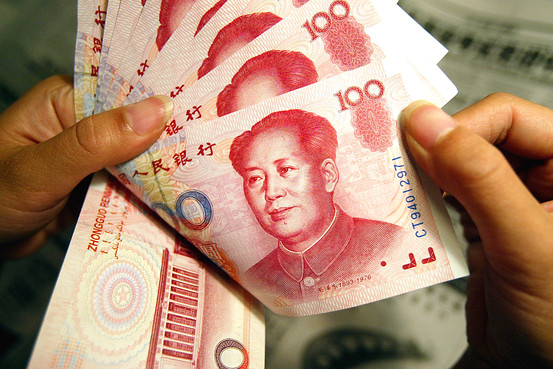For a currency that is regularly critiqued for not being free-floating, the moves from China to devalue the Yuan have caused quite the stir throughout the financial markets. It was originally indices and those economies with an import reliance from China who felt the initial impact and currency depreciation following the sudden Yuan devaluation.
However it is now the turn of the USD to undertake a round of punishment, as the markets began to take into deeper consideration whether the sudden devaluation of the Yuan would push back the Federal Reserve when it comes to raising US interest rates. This is a concern to investors and resulted into the USD falling heavily during trading yesterday with the USDJPY dropping from its two-month high at 125.270 to 123.386 and the EURUSD storming ahead from 1.1024 to trade as high as 1.1213.
Investors are becoming nervous that the recent events might lead the Federal Reserve to postpone raising interest rates from as early of next month, and encourage interest rate expectations to be pushed back until at least the end of the year. While further uncertainties might encourage some hesitations and a previous FOMC statement did highlight that the central bank are monitoring international risks, I do maintain that the Federal Reserve should begin raising rates next month. The US economic data is consistently robust and raising optimism that its economic recovery is sustainable. I am actually expecting both major indices and the USD to begin recovering losses today.
Indices will benefit from the pause in selling in the commodity markets with Gold rebounding and Oil at least attempting to stabilize, while the USD should regain momentum because it is really unclear whether the decision to devalue the Yuan will impact the Federal Reserve’s repeated commitment to begin raising US interest rates this year. The pause in the recent aggressive selling in the commodity markets will provide a welcome boost in sentiment in those economies reliant on commodity exports and should prevent some emerging market currencies from falling any further in the short-term.
Advertisement
After extending to a monthly high at 1.1213 with the move being mainly motivated by the USD weakness, the EURUSD is withdrawing its gains. There is an argument that the Eurodollar is overvalued at this level and returning USD momentum would mean this pair is vulnerable to falling further and back down towards 1.10. The EU economy is still suffering from very low inflation and stagnant growth concerns and with the ECB also issuing QE for at least the next year, it would take a widespread USD sell-off for the pair to rise any further. I am actually expecting the ECB to threaten the prospect of extending QE further during future policy meetings, mainly because a lower-valued Euro is an inflation boost and would enhance export competitiveness. Greece’s GDP later today will show another sharp contraction and widen concerns that the economic divergence that was behind the excessive volatility earlier this year is emerging in Europe.
The USDCHF has pulled away from its five-month highs at 0.9901 towards 0.9677. With that being said, the pair is still trading beyond its 200 Moving Average and the outlook on the USDCHF remains bullish. The consistently robust US economic data will need to reverse for the USD to be exposed to longer-term vulnerabilities against the CHF and with its being no hidden secret that the Swiss National Bank (SNB) desire a weaker currency I am long-term positive on the pair. The SNB have been actively intervening in the currency markets recently with the EURCHF suddenly jumping from 1.05 to its highest since the shock from the central bank back in January at 1.09. In my opinion the SNB are targeting the EURCHF maintaining itself at 1.10 and this is largely why I remain bearish on the CHF against its main trading partners.
The GBPUSD managed to appreciate to 1.5695 following the USD pressure, but the Cable has found sellers appearing each time the pair has threatened 1.57 over the past six weeks and I am not expecting this to change.
Advertisement
Follow Jameel on Twitter @Jameel_FXTM
For more information please visit: ForexTime
Add a comment







